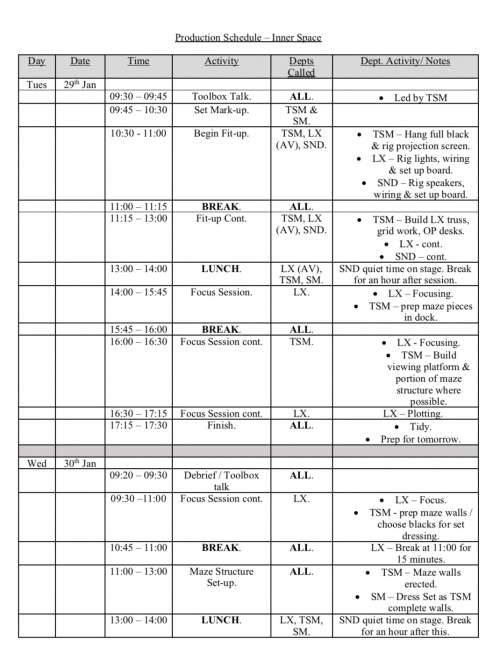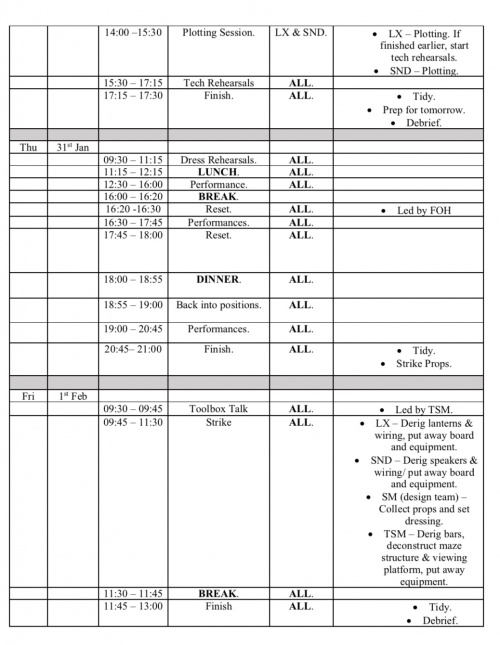Inner Space 2019
| Inner Space Race | ||||||||||||||||||||||||||||||||||||||||||||||||||||||||||||||||||||||||||||||||||
|---|---|---|---|---|---|---|---|---|---|---|---|---|---|---|---|---|---|---|---|---|---|---|---|---|---|---|---|---|---|---|---|---|---|---|---|---|---|---|---|---|---|---|---|---|---|---|---|---|---|---|---|---|---|---|---|---|---|---|---|---|---|---|---|---|---|---|---|---|---|---|---|---|---|---|---|---|---|---|---|---|---|---|

| ||||||||||||||||||||||||||||||||||||||||||||||||||||||||||||||||||||||||||||||||||
Logo by Darren Wilson
| ||||||||||||||||||||||||||||||||||||||||||||||||||||||||||||||||||||||||||||||||||
About
"Inner Space Race is a virtual experience in real life. Complete with maze, coins and ghosts, Inner Space Race puts two competitors head to head in a Pacman like points race". The project was executed by the PTM1 class of 2021 (RCS Graduate 21) in the New Athenaeum Theatre Jan 29th – Feb. 1st with performances on Thursday Jan. 31st.
Design
Production Management
The Production Management team consisted of Production Manager, Ewan Sullivan, and Deputy Production Manager, Hannah Henderson.
Production Management was in charge of inter-departmental health and communication, establishing and leading meetings, creating team positions, enforcing correct codes of practice and deadlines, scheduling, budgetary decision making, and staff communication.
Schedule
Technical Stage Management
The Technical Stage Management Team consisted of Stage Supervisor Darren Wilson, Deputy Stage Supervisor Erin Johnstone and Head of Flys Noah Dates.
The technical stage management team were responsible for creating the structure of the maze layout. To do this the team looked into different ways of rigging the hard masking flats on their vertical side to create the walls of the maze. In the end we came up with a method that used Kee Clamp base plates and vertical pieces of scaff pipe to hold the hard maskers upright. Barrel clamps were used to attach the maskers to the scaff pipe.
In preparation for the week the TSM team were required to create various documents.
- 1:25 scale ground plan of the maze
- Equipment list
- Risk assessments File:Innerspace production manual.xlsx
- TSM schedule
- Fly plot



Stage Management
The Stage Management team consisted of Stage Manager Lea Meloee, Deputy Stage Manager Nina Madriz and Assistant Stage Managers on Book Zeni Bollok, Julia Daniczek and Rhiannon Mitchell.
The main responsibility of the stage management team was to enforce a smooth execution and running of the performance. For this particular production that meant paying extra attention to audience interaction and the calling of the performance.
This production was an interactive experience, requiring the audience to take an active part in the performance. Due to the nature of the performance the stage management team organized and monitored the audience interaction carefully. Measures were taken to ensure the audiences safety, see risk assessments. Each player was allocated a host to guide them before the game, in between games, and after the game. They would answer any questions and provide further explanation if required.
The cues for the game itself were visual and given by the audience as they picked up stars and planets or were caught by ghosts. There were two players in the maze at once and no two players would navigate the maze the same way. The nature of the game, namely the unpredictability of the players, called for two people to be calling the game, one for each player. The DSM or the ASM on book and the spotter (the second person calling the game) were situated on either flyfloor allowing them a full view of the maze. The prompt book was created by DSM Nina Madriz.
During the performance stage manager Lea Meloee coordinated crew-members involved in the running of the performance. Crew-members were situated in R1, oustide R1, on both flyfloors and in the wings of stage right and stage left. This was done to further enforce and ensure a smooth execution and running of the performace.
Risk Assessments: File:SM RA InnerSpaceRace.xlsx
Extended SM-team rotations: File:Extended SM-team InnerSpaceRace.xlsx
Performance schedule: File:Performance schedule InnerSpaceRace.pdf
Prompt book:
Sound
For the sound team on the Inner Space 2019 our biggest challenge was getting sound to every part of the maze. To do this we chose to hang 6 D&B E3 Speakers overhead on counterweight bars 5 and 28. Our control position was in the up stage left wing however because the maze was placed in front of our position we had no line of sight into the maze. We worked alongside LX and Stage management to come up with an effective cueing system. The sound design of the show was based of the video game Pacman with an outer space twist. when players collected certain items a certain sound would be played depending on what item they had collected.
Equipment
6x D&B E3
1x D&B D6 Amp
1x focusrite Scarlett
1x MacBook Pro with QLab
1x Ipad
4x 10M NL2 Speakon
2x 20M NL2 Speakon
3x 10M XLR
1x Shure SM58
Lighting
The lighting team's responsibility was to ensure there was a good amount of lighting to illuminate the stage as well as provide an artistic flare to the proceedings of Inner Space 2019. The lighting design team consisted of Mark Sillett (Lead Lighting Designer), Ryan Worrell(Lighting and Video Design) and Nicholas Rübenacker (Lighting Designer and Programmer). We took the collaborative lighting design approach because we felt the ethos of the project was working together to create something amazing. Our PLX (Production Electrician) was Louisa Craig and our LX Crew was Ross Hunter. We could not have ran this department without them they were absolutely valuable to the team. Their duties included ensuring all fixtures were booked, addressed and ready to be operated as well as working as an effective team within the LX department to ensure that any issues with electrics and lighting were dealt with quickly and efficiently. They completed this to a very high standard. Attached are all of the LX paperwork from this project.
Kit Used
10 Altman PAR 64 MFL
10 ETC Source4 Fresnel
20 ETC Source4 PAR MFL
8 Martin RUSH PAR 2 RGBW Zoom
4 Martin MAC TW1
4 ADJ UV COB Cannon
1 GrandMA lite
AV
AV had Two important jobs in this production, first to make the training video and second to make the timer and graphics for the display in the game. the work for these was done in blender, a 3d modelling software. it was then rendered, which had a total render time of 13 days and 15 hours. once rendered, the videos were edited together with prerecorded audio and music that was made in mixcraft7. the finished edit was then exported and loaded into qlab for playing on the day. the finished video can be seen below:
The timer and other game graphics were much simpler to make. these were all 2d graphics and were animated inside Adobe After Effects, to complete the animations. this was projected onto the bp screen from a 6000-lumen projector from the AV store.

